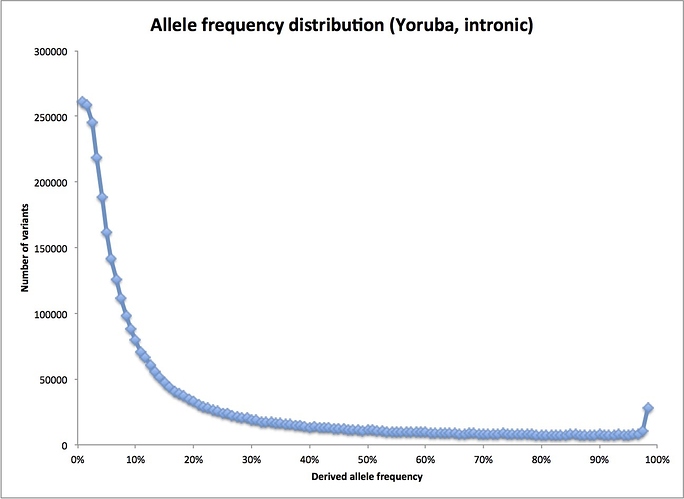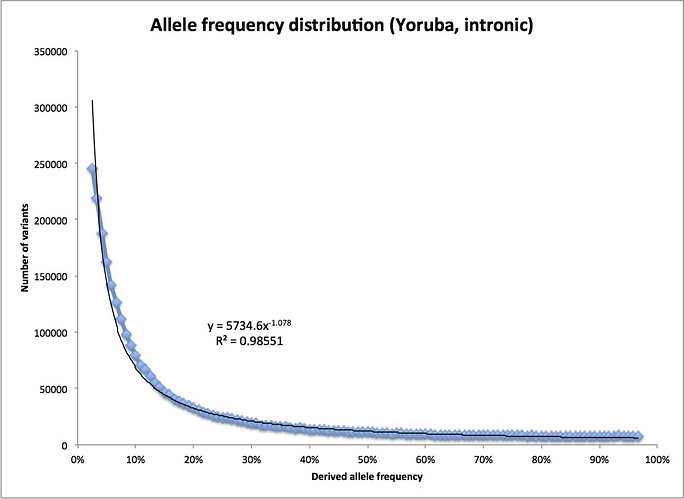Needless to say, I take great exception to the dogmatism of the BioLogos spokespeople. I do not believe the data support their conclusions and I believe it is entirely unfair to exclude the creation model without ever considering what the implications of the model would be (in scientific terms, they failed to propose a null hypothesis that could be ruled out by the evidence). I have written about the predictions of a straightforward biblical model several times, including my articles on Adam, Eve, and Noah vs. Modern Genetics, The Neutral Model of Evolution and Recent African Origins, and Does Genetics Point to a Single Primal Couple?
There are two issues at hand. The first is their a priori exclusion of the biblical model from any and all consideration—following ardent atheists like Richard Lewontin. The second is their appeal to mutation as the sole source of genetic diversity. Of course there has not been enough time to accumulate all the diversity we see in people today if Adam was homozygous at all loci.15 But that is a straw-man argument. Why would anyone believe Adam had no genetic diversity built into his genome from the beginning?
Question - IF we assume Adam had genetic diversity built into his genome, what would it say for his off spring? And how would it affect the diversity among human population today, even if we assume a 6000 year time span?
As we will see, the amount of genetic diversity within people alive today, coupled with the distribution of alleles among world populations, is strong testimony to an original Adam. Add this to the genetic effects of the biblical Flood (with its severe but short population bottleneck) and the Tower of Babel (with its subsequent partitioning of the genes that were formerly on board the Ark) and we can go a long way to explain human genetic history, from a biblical perspective, while using the genetic data available to date.
When I began to analyze the data, I was at first struck by several things that appeared to support the evolutionary model. For example, Figure 1 displays the relative proportions of the alleles analyzed by HapMap. One can easily see that the bulk of allelic variants are transitions18 (A/G or C/T). These are chemically (thus statistically) more likely than the transversions (A/C, A/T, C/G or G/T). Why are the two types of transitions evenly balanced? Because an A to G change on one strand creates a G to C change on the reverse strand of DNA, and vice versa. Given millions of years of random mutation, one might expect to find 1) more transitions than transversions and 2) equal levels of the reverse complements, because mutations should appear randomly on either strand. This second rule is followed in all the variant classes except between A/T and C/G, and could be interpreted as functional conservation of C and G position in the genome. This is not evidence against the creation model, however, as I do not believe the creation model makes any specific prediction about these ratios
Now, when we get to the modeling, I think I see where his problem may be (but I am no expert)
At this point, we need something more powerful to model allele frequency changes in human history under the biblical parameters. To do this, I wrote a program in Perl that starts with a founder (Adam) and assigns him 1,000 heterozygous alleles. I assume Eve is a clone26 and give her the same set of variations. As they start having children, the children will be assigned a spouse after reaching a user-defined age of maturation. Spouses are chosen at random from all available unmarried people of the opposite sex. I assume mating for life. Also, unlike many other modeling programs that use discrete generations, I use overlapping generations. Thus, a person can marry anyone of the opposite sex, regardless of age (although an old, unmarried person is unlikely to exist) or relational status (with the exception of ancestors). Because I am tracking individuals, not averages, there is a greater demand on memory allocation, so the size of the population I am able to model is limited. However, this does allow me to model something that should more or less reflect biblical history.
I’m not sure sure how many RANDOM unmarried people of opposite sex can be, when they are all children of the same parents,ultimately.
The evolutionary models espoused by BioLogos and others depend on genetic drift and natural selection to influence allele frequencies. Because drift occurs so slowly in a large population, millions of years are needed to account for the allele frequency spectrum of modern man. The biblical model, however, starts with the smallest population possible (two individuals) and expects rapid drift in the antediluvian population. What would occur at the Flood, over a millennium and a half later, when the world population was reduced to eight people, with only three reproducing couples, of whom the three men are brothers? Using the same parameters as in Figure 11, I ran the model to simulate 1,500 years of marriage and birth, stopping every 500 years to reduce the population to three founding couples made up of three brothers (full siblings) and three women selected at random from the available unmarried women (Figure 12). From Figure 11, I knew that drift would effectively stop in any exponentially growing population prior to 500 years, so this seemed like a fair strategy.
What can we learn from Figure 12? First, as before, drift occurs from Adam and Eve (horizontal blue line) to the first sampling at 100 years (jagged brown line) and nearly no drift is noticeable 400 years later (smooth green line). A bottleneck occurred after year 500. One hundred years later, the population has drifted even farther (jagged dark blue line). In fact, each bottleneck drives the allele frequency distribution closer and closer to the modern average.
I’m confused. Biologos argues that genetic diversity shows no bottlenecks smaller than a few thousand individuals at it’s lowest, where as this guy has multiple bottlenecks and still arrives at a distribution closer to the modern average? How can this be?
As detailed above, one of the arguments from BioLogos is that there has not been enough time to accumulate the mutations found among people today if we came from Adam and Eve. A corollary to that is, we could not survive that kind of mutation load. As I said above, however, this is assuming Adam had no heterozygosity, which is ridiculous. How much created diversity might we assume? One way of estimating this is to look at the number of alleles shared among all world populations.
It is disingenuous for Biologos to claim no evidence for Adam and Eve for several reasons. First, their conclusions are based on evolutionary assumptions. One cannot legitimately claim something to be proven without testing the assumptions behind that claim. To do otherwise amounts to circular reasoning and question begging, and a rejection of any alternative theory following from this is thus reduced to nothing more than a straw man argument. Second, the majority of data fit nicely into the straightforward biblical model, including a single starting couple a mere 6,000 years ago. While there are several unresolved issues with the biblical model as it relates to the data at hand, the same can be said about every evolutionary model, so one cannot conclude that the Bible has been invalidated by the available evidence. Albert Einstein is rumored to have opined, “A thousand experiments cannot prove me right. A single experiment can prove me wrong.” This is sound logic. Francis Collins and BioLogos would do well to heed his advice.
Can someone provide a detailed response? I’m a total newb when it comes to the theory of evolution and DNA.
Thanks.


 )
)